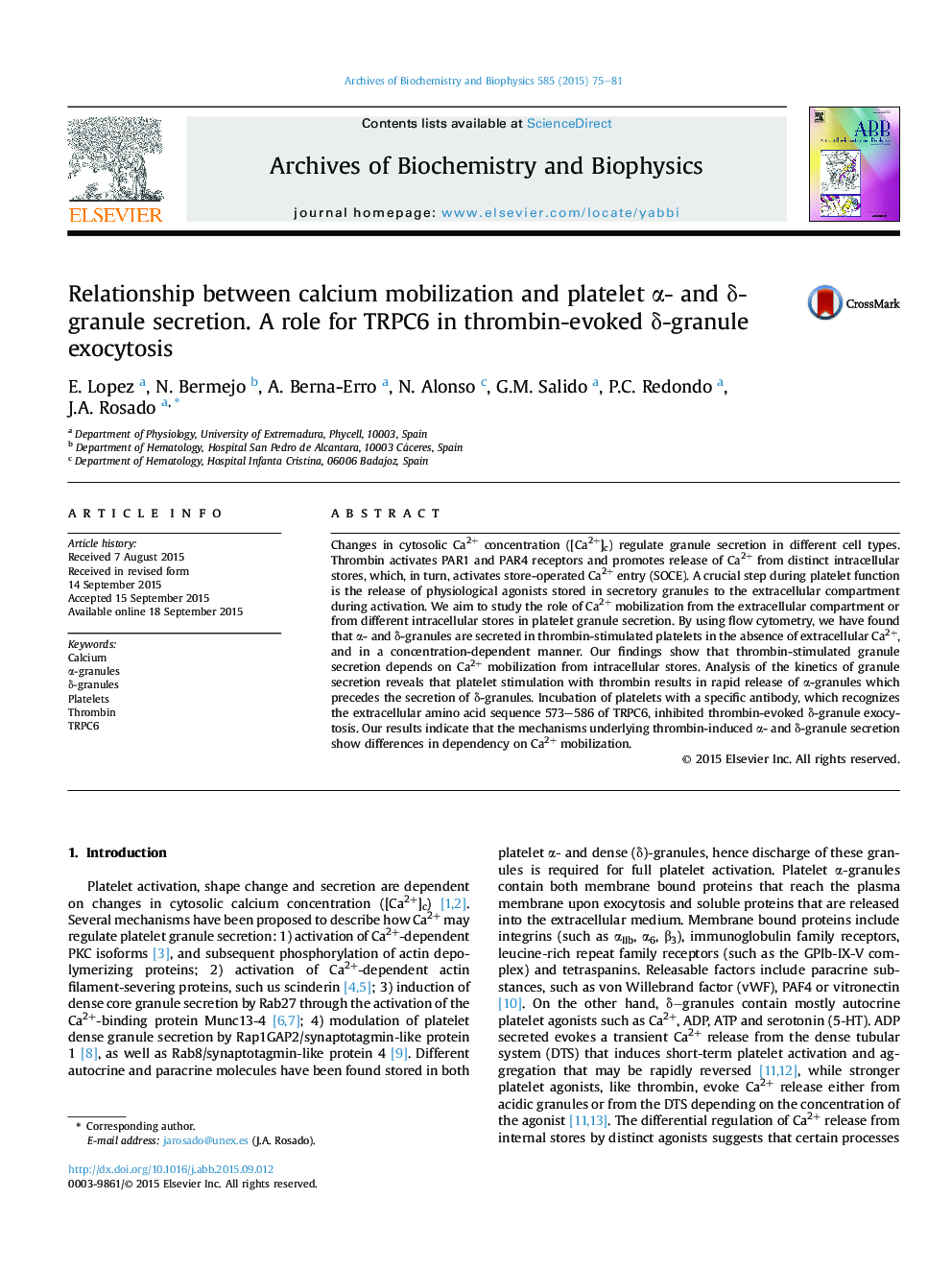| Article ID | Journal | Published Year | Pages | File Type |
|---|---|---|---|---|
| 1924844 | Archives of Biochemistry and Biophysics | 2015 | 7 Pages |
•Activated platelets degranulate to release agents important for primary haemostasis.•Intracellular Ca2+ mobilization is essential for α- and δ-granule secretion.•α-granule secretion occurs rapidly upon platelets stimulation with thrombin.•Exogenous Ca2+ entry is necessary for the exocytosis of δ-granule but not α-granules.•Canonical transient receptor potential-6 (TRPC6) function is important for δ-granule secretion.
Changes in cytosolic Ca2+ concentration ([Ca2+]c) regulate granule secretion in different cell types. Thrombin activates PAR1 and PAR4 receptors and promotes release of Ca2+ from distinct intracellular stores, which, in turn, activates store-operated Ca2+ entry (SOCE). A crucial step during platelet function is the release of physiological agonists stored in secretory granules to the extracellular compartment during activation. We aim to study the role of Ca2+ mobilization from the extracellular compartment or from different intracellular stores in platelet granule secretion. By using flow cytometry, we have found that α- and δ-granules are secreted in thrombin-stimulated platelets in the absence of extracellular Ca2+, and in a concentration-dependent manner. Our findings show that thrombin-stimulated granule secretion depends on Ca2+ mobilization from intracellular stores. Analysis of the kinetics of granule secretion reveals that platelet stimulation with thrombin results in rapid release of α-granules which precedes the secretion of δ-granules. Incubation of platelets with a specific antibody, which recognizes the extracellular amino acid sequence 573–586 of TRPC6, inhibited thrombin-evoked δ-granule exocytosis. Our results indicate that the mechanisms underlying thrombin-induced α- and δ-granule secretion show differences in dependency on Ca2+ mobilization.
